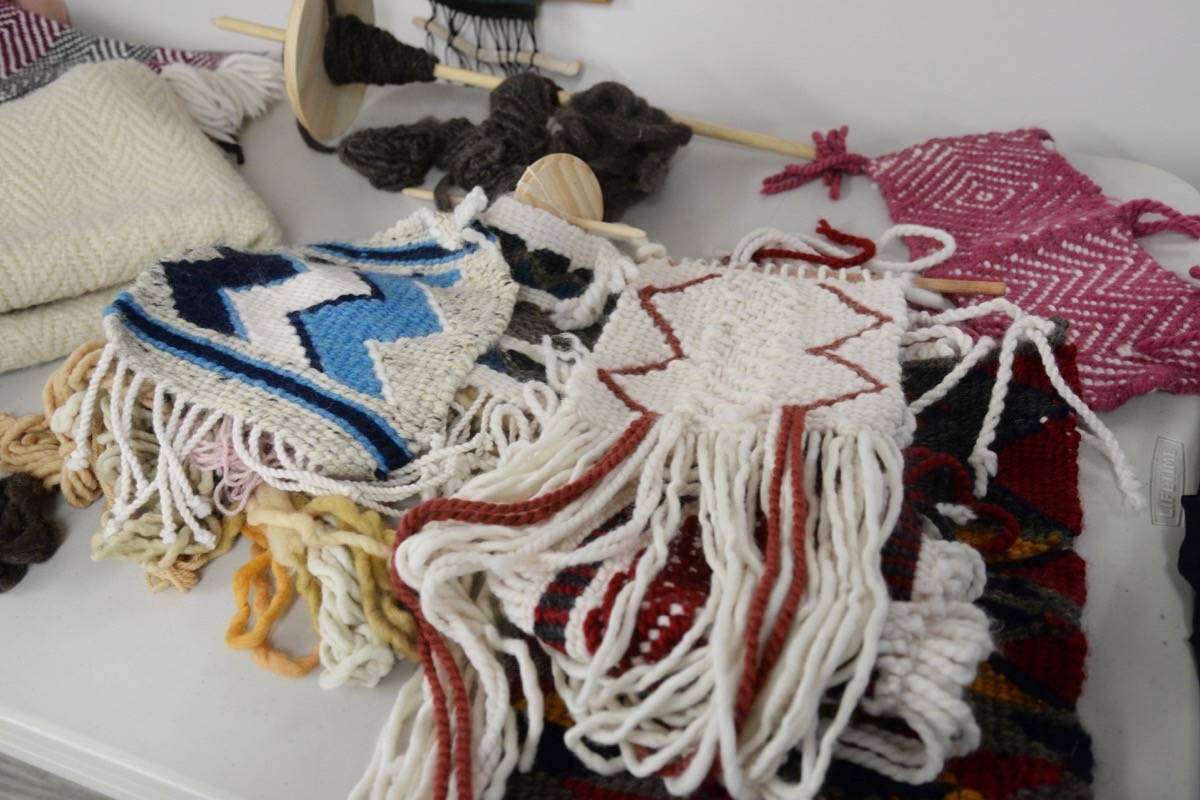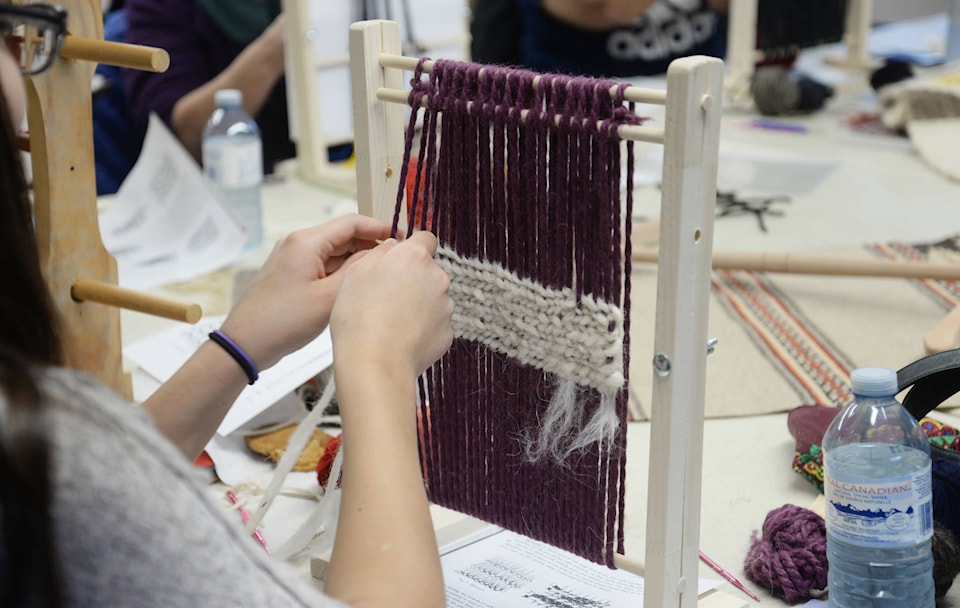Salish weaving workshops at Seabird Island are working to revive and pass on an ancient tradition.
After the fashion design program at the University of the Fraser Valley (UFV) was discontinued in 2016, the arts faculty decided the looms and weaving equipment should benefit a First Nations community.
“Seabird Island seemed like a good fit given the Fashion Design department’s history of promoting the success of Indigenous students and the strong Indigenous designers who graduated from the program,” said UFV Dean of Arts Jacqueline Nolte in an email. “Seabird has a strong educational program promoting entrepreneurial activities and a clear sense of community provided through self-governance.”
With its new equipment, Seabird Island opened a new Weaving and Textiles Centre in its Mill Hall, and decided to put on Salish weaving workshops. The classes quickly garnered a waitling list of locals and surrounding community members who wanted to try their hand at the age-old artform.
Weaving has extensive history and significance to Salish people, explained weaving instructor Betty Peters in an email to the Observer.
“Swōqw’elh – meaning goat wool blanket – in our language is a sign of wealth,” she wrote. “Blankets made of mountain goat are highly valued and are the most significant gift that you can receive. It takes a lot of time and resources to make these blankets – from collecting the wool, preparing it for weaving and the knowledge [needed] to make the blanket.”
Peters said Salish people raised wooly dogs for their fiber to mix with mountain goat wool, and used other fibers like stinging nettle, fireweed, milkweed and duck down.
And these weavings have more than one purpose. Ceremonial blankets are worn by leaders and used in special ceremonies, while story blankets pass on teachings about a place or event.
The popular weaving workshop at Mill Hall is one of many efforts made by community groups and weavers to revive the tradition, according to Peters.
“Weaving is part of our cultural identity and sharing the teachings helps to strengthen our culture and families,” she wrote. “When we weave, we are not just making a weaving we are also connecting with our ancestors through their beautiful teachings, stories and inspirational art that was left behind.”
Peters said that along with gaining the ability to pass on technical weaving skills, workshop participants develop an understanding of history and traditions through shared stories.
“It is ancient, but it is also contemporary,” Peters wrote. “Cultural teachings and traditions promote community as it brings people together to learn and share with one another.”
Seabird College hasn’t yet announced the next workshop, but Peters encourages anyone interested in learning more about weaving to look into the current exhibit at UBC’s Museum of Anthropology called “Fabric of Our Land.” The exhibit is running until April 15 and presents the rare opportunity to see Coast Salish blankets from the 1800s – masterworks often stored away in museums – that are rich with deeply woven histories and cultural significance to the Salish region.

